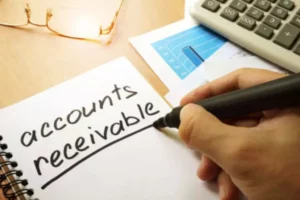Content

Whether you are deploying for the first time or creating a sustainable education program for maximum value creation, explore how you can take the next steps to upskill your users. F&A leadership can have a significant impact by creating sustainable, scalable processes that can support the business before, during, and long after the IPO. This company-wide effort crosses multiple functional areas and is reinforced by critical project management and a strong technology infrastructure.
When should you reconcile your account?
How often should you be reconciling? In general, businesses should do bank reconciliations at least once a month. This process typically happens after the end of the month because banks send monthly statements at the end of the month that can be used as a basis for reconciliation.
When you have all your data in one place, comparing accounts and spotting errors is easier. An effective reconciliation tool is essential to avoid challenges that come with reconciling accounts manually. If you’ve done a thorough internal investigation and still can’t account for the errors, it’s time to confirm with the vendors and banks that there are no errors from their end. Unfortunately, banks rarely make errors in their statements because they are electronic records, so you must exhaust all review methods before going this way. Check if you have every transaction for outgoing funds recorded in your internal ledger. Finally, check that your independent or third-party invoices and statements match the ones in your accounts and note the discrepancies.
How Do You Reconcile a Bank Statement?
Here, you reconcile your accounts payable records with statements provided by vendors and suppliers to ensure that the amount you paid for a product or service matches the amount received by the vendor. Unlike bank statements, vendors don’t always send in their reports, so you may need to request them. Reconciling your accounts is a great way to discover erroneous charges or financial irregularities on multiple bank accounts.
- These reconciliations are usually done as part of a continuous close process, or they may involve accounts with high volume or sensitive activity.
- When you have all your data in one place, comparing accounts and spotting errors is easier.
- Our solutions complement SAP software as part of an end-to-end offering for Finance & Accounting.
- Even more impressive is how 46% finish their monthly within four business days compared to the previous rate of 29% in 2015.
- Additionally, the reconciliation process is an important part of the internal control environment.
- To do this, you compare the general ledger cash account to your bank balance.
- Balance sheet reconciliation should happen in defined intervals, such as monthly, quarterly, or annually.
However, accounts need to be reconciled to ensure that goods or services were received or delivered as per the contract. Reconciliation at this time also helps evaluate if the expense needs to be continued or not. Once the trial balance looks accurate, you can rest https://www.bookstime.com/articles/what-is-an-account-reconciliation-and-how-does-it-work assured your accounts have been reconciled properly. Anytime something appears out of the ordinary, you’ll want to review the originating documents such as invoices entered to determine if they were posted properly and whether any adjustments need to be made.
Human Errors
Timely, reliable data is critical for decision-making and reporting throughout the M&A lifecycle. Without accurate information, organizations risk making poor business decisions, paying too much, issuing inaccurate financial statements, and other errors. Centralize, streamline, and automate intercompany reconciliations and dispute management.Seamlessly integrate with all intercompany systems and data sources. Automatically identify intercompany exceptions and underlying transactions causing out-of-balances with rules-based solutions to resolve discrepancies quickly. By incorporating efficient reconciliation in accounting practices, organizations can maintain a solid financial foundation, detect discrepancies, and reduce the risk of financial errors.
- The cash column in the cash book shows the available cash while the bank column shows the cash at the bank.
- Many people reconcile their checkbooks and credit card accounts periodically by comparing their written checks, debit card receipts, and credit card receipts with their bank and credit card statements.
- More specifically, companies must reconcile all balance sheet accounts that could contain a significant or material misstatement.
- Companies with single-entry bookkeeping systems can perform a form of reconciliation by comparing invoices, receipts, and other documentation against the entries in their books.
- In cases where staffing doesn’t allow for this day-to-day segregation of duties, account reconciliation can provide an opportunity to catch mistakes or fraud.
Reviewing your comparative trial balance is one of the most important things you can do for your business. The software system can produce reconciliation reports which offer an overview of what records match and the ones that don’t. The most daunting reason for account differences may be attributed to fraud.
AccountingTools
Many organizations are unable to complete the reconciliation process in a timely manner, which introduces risk. Companies that adopt a more automated, Continuous Accounting approach benefit from a reduced risk of misstatement and a more preventive control environment. BlackLine is a high-growth, SaaS business that is transforming and modernizing the way finance and accounting departments operate. We empower companies of all sizes across all industries to improve the integrity of their financial reporting, achieve efficiencies and enhance real-time visibility into their operations.

